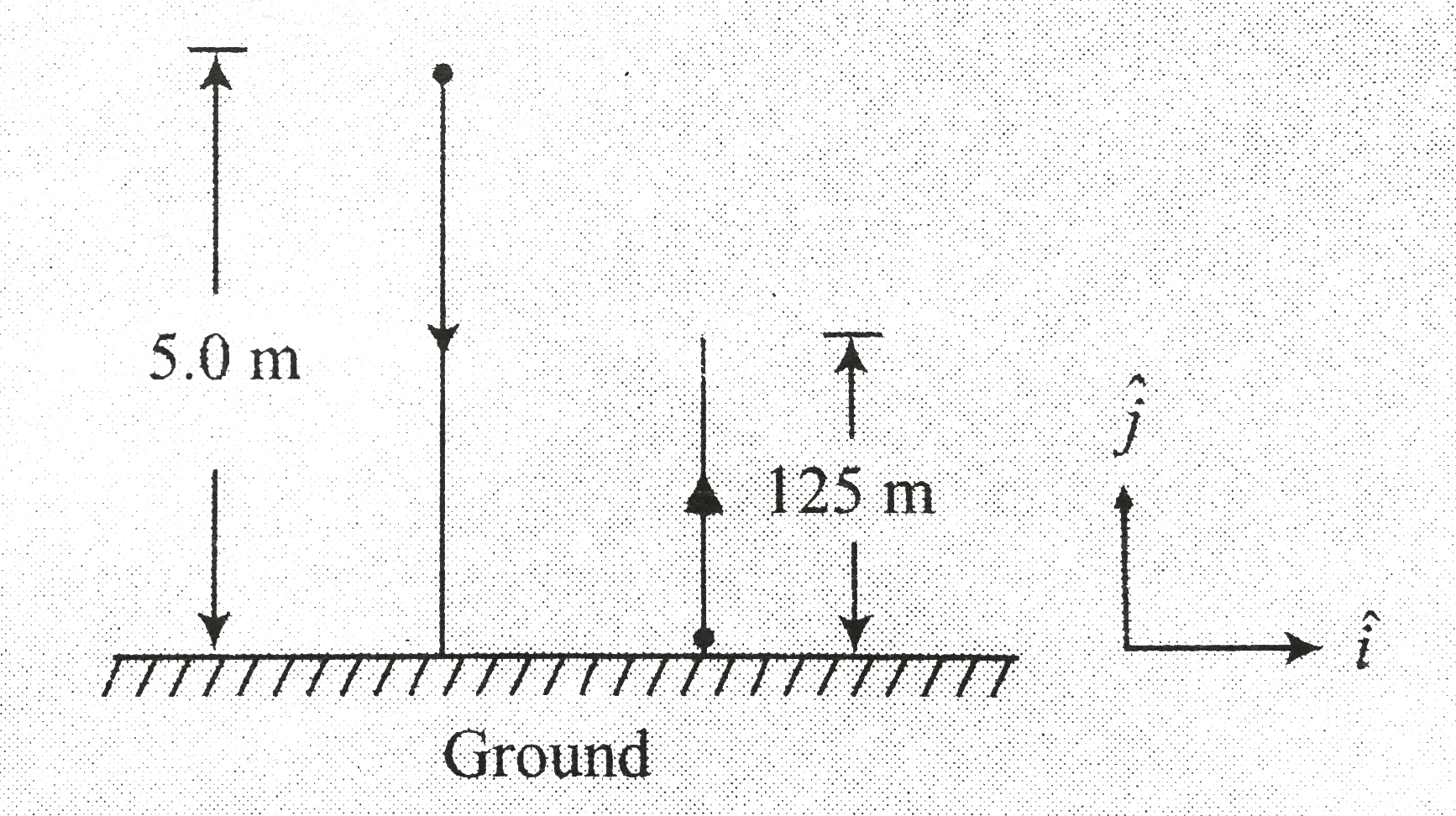A rubber ball of mass 50g falls from a height of 100cm and rebounds to a height of 50cm Find the impulse and average force between the ball and the ground, if time of contact is 0.1s .
The correct Answer is:0.3778Ns;3.78N .
To solve the problem, we need to calculate the impulse and average force between the rubber ball and the ground. Let's break down the steps:
Step 1: Convert Mass to Kilograms
The mass of the ball is given as 50 grams. We need to convert this to kilograms for standard SI units.
Mass(m)=50g=0.050kg
Hint: Remember that 1 kg = 1000 g.
Step 2: Calculate the Initial Velocity Before Impact
The ball falls from a height of 100 cm. We can use the formula for the velocity of an object in free fall:
v=√2gh
Where:
- g = acceleration due to gravity = 9.81m/s2
- h = height = 100cm=1.00m
Calculating the initial velocity:
v=√2×9.81×1.00=√19.62≈4.43m/s
Hint: Use the square root function to find the velocity from the height.
Step 3: Calculate the Final Velocity After Rebound
The ball rebounds to a height of 50 cm. We will use the same formula to find the velocity just after the rebound:
v′=√2gh′
Where:
- h′=50cm=0.50m
Calculating the final velocity:
v′=√2×9.81×0.50=√9.81≈3.13m/s
Hint: Remember that the rebound velocity is positive as it moves upwards.
Step 4: Calculate the Change in Momentum
The change in momentum (Δp) can be calculated using the formula:
Δp=m(v′+v)
Substituting the values we have:
Δp=0.050(3.13+4.43)=0.050×7.56≈0.378kg m/s
Hint: Note that the initial velocity is negative (downward) and the rebound velocity is positive (upward).
Step 5: Calculate the Impulse
Impulse (J) is equal to the change in momentum:
J=Δp≈0.378kg m/s
Hint: Impulse is the same as the change in momentum.
Step 6: Calculate the Average Force
The average force (Favg) can be calculated using the formula:
Favg=JΔt
Where Δt=0.1s:
Favg=0.3780.1=3.78N
Hint: Average force is impulse divided by the time of contact.
Final Answers
- Impulse: ≈0.378kg m/s
- Average Force: ≈3.78N
The mass of the ball is given as 50 grams. We need to convert this to kilograms for standard SI units.
The ball falls from a height of 100 cm. We can use the formula for the velocity of an object in free fall:
- g = acceleration due to gravity = 9.81m/s2
- h = height = 100cm=1.00m
The ball rebounds to a height of 50 cm. We will use the same formula to find the velocity just after the rebound:
- h′=50cm=0.50m
The change in momentum (Δp) can be calculated using the formula:
Impulse (J) is equal to the change in momentum:
The average force (Favg) can be calculated using the formula:
- Impulse: ≈0.378kg m/s
- Average Force: ≈3.78N
Topper's Solved these Questions
- BOOK - PRADEEPCHAPTER - LAWS OF MOTIONEXERCISE - JEE (Main and Advanced)/ Medical Entrance Special93videos
LAWS OF MOTION
- BOOK - PRADEEPCHAPTER - LAWS OF MOTIONEXERCISE - Integer Type Questions7videos
LAWS OF MOTION
- BOOK - PRADEEPCHAPTER - LAWS OF MOTIONEXERCISE - Fill in the blanks20videos
LAWS OF MOTION
- BOOK - PRADEEPCHAPTER - KINEMATICSEXERCISE - 1 NCERT Comprehension4videos
KINEMATICS
- BOOK - PRADEEPCHAPTER - MATHEMATICAL TOOLSEXERCISE - Fill in the blanks5videos
MATHEMATICAL TOOLS
Similar Questions
A rubber ball of mass 50 g falls from a height of 5m and rebounds to a height of 1.25 m. Find the impulse and the average force between the ball and the ground if the time for which they are in contact was 0.1s
 View Solution
View SolutionA glass ball whose mass is 10 g falls from a height of 40 m and rebounds to a height of 10 m. Find the impulse and the average force between the glass ball and the floor if the time during which they are in contact is 0.1 s.
View Solution
Knowledge Check
- Question 1 - Select One
Consider a ball fells from a height of 2 m and rebounds to a height of 0.5 m. If the mass of the ball is 60 g, then find the impulse and the average force between the ball and the ground. The time for which the ball and the ground are in contact was 0.2 s. The initial velocity of the ball at P is zero. Let the final velocity of the ball at Q is v.
A0.563N-b,2.817 NB1.5N-s,3.17NC2.14 N-s, 1.817 NDNone of these - Question 2 - Select One
A ball is dropped form a height of 20 cm . Ball rebounds to a height of 10 cm . What is the loss of energy ?
A0.25B0.75C0.5D1 - Question 3 - Select One
A ball falls from rest from a height h onto a floor, and rebounds to a height h/4. The coefficient of restitution between the ball and the floor is
A1√2B12C14D34
A bullet of mass 50g moving with a speed of 500ms−1 is brought to rest in 0.01s Find the impulse and the average force .
View SolutionA ball falls on the ground fro a height of 2.0 m and rebounds up to a height of 1.5 m. Find the coefficient of restitution.
View SolutionA ball falls on the ground from a height of 10m and rebounds to a height of 8m. What is the percentage loss kinetic energy of the ball? (g=10m/s2)
View SolutionA ball is dropped from a height h onto a floor and rebounds to a height h/6. The coefficient of restitution between the ball and the floor is
View SolutionA steel ball is dropped on a hard surface from a height of 1m and rebounds to a height of 64cm. The maximum height attained by the ball after nth bounce is (in m)
View Solution

